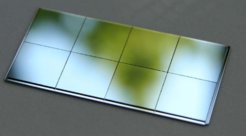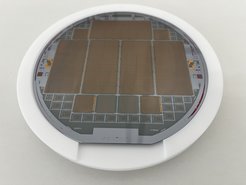News
Semiconductor Laboratory of the Max Planck Society Contributes to Breakthrough Protein Imaging at European XFEL with Sensors for the DSSC Detector
10/11/2024
The Nobel Prize in Chemistry for 2024 has been awarded to David Baker, Demis Hassabis, and John M. Jumper for their pioneering work on protein structure prediction and computational protein design. Their research has revolutionized the understanding of protein folding and design, with profound implications for medicine, biology, and chemistry. Decoding protein structures is a crucial aspect of the research conducted at European XFEL, and David Baker has been an active user at that facility since 2022, where he has conducted groundbreaking experiments.

The Semiconductor Laboratory of the Max Planck Society (HLL) is proud to announce its vital contribution to this groundbreaking research at the European XFEL, where the advanced DSSC detector, equipped with sensors developed by HLL, has been instrumental in capturing single-shot diffraction images of de novo proteins using soft X-rays. This breakthrough was achieved at the SQS (Small Quantum Systems) station, where the DSSC detector’s capability to operate at a mega frame rate enabled the real-time study of proteins, marking a significant milestone in structural biology.
Among his most notable achievements, David Baker used the DSSC detector at European XFEL to record diffraction patterns of computationally designed proteins and single molecules for the very first time. His work in the field of de novo protein design, which allows scientists to create proteins with new functions, has opened new frontiers in understanding how proteins fold and perform biological tasks. The ability to study these proteins with the precision offered by the DSSC detector has been a key component of this success.
"Congratulations to David Baker, Demis Hassabis, and John M. Jumper on receiving the Nobel Prize in Chemistry," said Prof. Dr. Allen Caldwell, Managing Director of the Semiconductor Laboratory. "We are honored that our technology played a role in supporting such pivotal research at European XFEL, where the exploration of protein structures is advancing new scientific knowledge and innovation."

Dr. Jelena Ninkovic, Head of the Semiconductor Laboratory, added, "This achievement underscores the importance of interdisciplinary collaboration and the power of combining cutting-edge technology with world-class scientific research. The recognition of David Baker's work and his use of our DSSC detector highlights the essential role that advanced sensor technology plays in today's scientific breakthroughs."
The HLL is dedicated to the development of state-of-the-art sensors and detectors for use in scientific research, spanning applications in high-energy physics, structural biology, astronomy, and quantum technologies. The lab’s innovations have been critical to enabling researchers worldwide to make breakthroughs in their respective fields.

